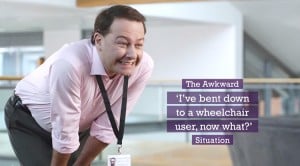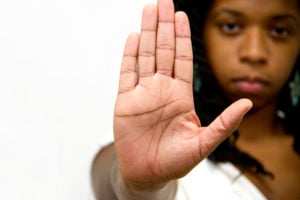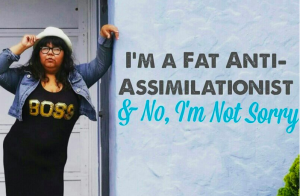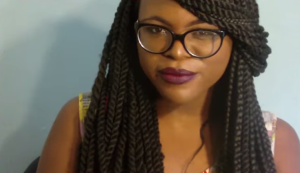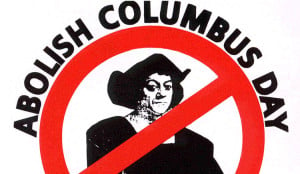
Person with braids and eyeglasses reading a book.
Recent mainstream films like Black Panther, A Wrinkle in Time, A Quiet Place, and Love, Simon are modeling a type of diversity that have long been absent, so it makes sense that conversations around the importance of diversity in media have been happening more often.
It pays to be diverse. Black Panther is still showing in theaters across the country and has broken records like the highest-grossing superhero movie of all time.
But it’s these conversations aren’t new.
Black people have been saying that the world needs Black superheroes and Black girl protagonists for a long time. LGBTQIA+ teens have been begging for a rom-com like Love, Simon. Deaf and disabled people have made noise about the importance of casting d/Deaf and disabled actors in movie and television roles.
The annual UCLA study “Hollywood Diversity Report 2018” shows that despite progress made, the film and broadcast television industry still has a lot of catching up to do.
Most of these conversations are still stuck on “Diversity 101”—making the argument that we need to do better when it comes to authentic representation in film, television, and literature, but not coming up with inclusive solutions.
Here are a few starting places for how we can most past discussions about why we need diversity and create actionable change:
1. Hire diverse creators and gatekeepers
Gatekeepers have a major impact on how an industry grows and changes. In book publishing, editors and publishing houses make decisions about what books will be published, which authors get to tell these stories (will it be another straight white woman writing about Black gay teen boys, or will a Black gay man finally get to publish his own experiences?), and how heavily books are promoted and marketed.
In film and TV, directors, producers, writers, and studios make choices about whether a trans woman actress will be cast in the role of a trans woman, or whether a cisgender straight man in drag will play that part.
If we want to enact real change, a momentous step in the right direction would just be hiring more marginalized creators and gatekeepers across the board in media industries.
2. Support diverse media with your money
With some exceptions, the majority of media companies are for-profit and make a lot of their decisions based on revenue. That’s why the box office success of Black Panther has been hailed as so revolutionary, even though it shouldn’t have taken until 2018 for Wakanda to hit the big screen.
If you have the financial privilege to support diverse media with your money, find strategic ways to do so that send the most powerful message.
Seeing a movie on opening weekend is ideal for films produced by major studios, but if that’s not an accessible option, it’s also a great idea to try to see in theaters or pay to rent or own the movie once it’s available on DVD or through a streaming service like Amazon.
I’ve made it my resolution the past few years to almost exclusively buy books by marginalized authors, and if I can, I show up in person to as many bookstore events and launch parties as possible and post about them on social media.
In the past year, I’ve been honored to go to events for Angie Thomas, Roxane Gay, Leigh Bardugo, Marie Lu, Sandhya Menon, Ibi Zoboi, Anna-Marie McLemore, and others.
When I can afford to, I purchase books during their initial print run in hardcover, as close to their release date as possible. And I tell my local independent booksellers which events I’m loving, and request books by marginalized authors they don’t have in stock.
3. Support diverse media with your influence
There’s no question that supporting diverse media can be expensive, especially for those of us who are also marginalized. I grew up in the projects and almost all my books as a kid came from the public library, so I know that it’s a privilege when I can afford tickets to Love, Simon in theaters or to attend BookCon in New York City to meet authors and get their autographs.
The fact is that engaging with media—particularly when it’s brand new—isn’t always accessible or affordable. Not all movies are widely released with subtitles, and many books don’t come out in audiobook, e-book, or braille formats alongside their original publication (if they do at all).
And if you’re someone who can binge watch a five-season series in a few days or who reads dozens of books a year, these hobbies can put a serious dent in your budget.
When you can’t support diverse media in the exact way you’d like to financially, do it with your influence. Word-of-mouth is still an extremely popular way that people hear about TV shows, movies, and books, especially for independent or smaller releases.
I’m part of a book club that meets monthly to read young adult books, and I always advocate for the diverse titles on our list when we vote on upcoming choices. I know not everyone will be able to buy the book in hardcover, but we’ll all read it and come together to discuss it, and that’s important too.
Post about diverse movies you’ve seen on social media. Retweet news about upcoming releases. Use social media, email, or snail mail to reach out to actors, authors, directors, and writers who are creating some of your favorite works, or to tell them what you’d like to see next time.
Attend book signings and launch parties even if you can’t afford to purchase the book and are planning to borrow it from the library.
4. Use any privilege you have to uplift marginalized creators
I’m disabled and queer, and I absolutely love it when I see my non-disabled friends sharing news about the casting of a deaf actress in A Quiet Place, or my non-LGBTQIA+ family members bring up how great Love, Simon was during a family dinner.
Similarly, I try to use my privilege as a white, thin and currently middle-class person to make other people aware of narratives and creators they might not already have on their radar. I’ve been recommending Tomi Adeyemi’s Children of Blood and Bone since I read a preview last summer, and now that it’s finally out, I’m thrilled to see my friends and family taking my suggestion.
Most TV shows, movies, and books are still overwhelmingly dominated by white people, and that’s something I think about every time I make a choice about what TV show to start next or what movie to watch with my partner.
In recent months, people have made headlines by taking actions like buying out theaters or donating tickets to support people who want to see movies like Black Panther but can’t afford to.
You can donate to an ongoing fundraiser or directly to an individual who wants to connect with a piece of media. You might purchase movie tickets for a friend or send them a copy of a book you know they’d love.
5. Create diverse media resources and fan pages
Review the media you’re interacting with, and let other people know how you feel about it. ClexaCon, the largest multi-fandom event for LGBTQIA+ women and allies, was created because fans of the show The 100 were angry and upset when one of the series’ prominent queer woman characters, Lexa, was killed off.
Black Girl Nerds, YA Pride, #FilmDis, Nerds of Prey podcast, Latinxs in KidLit, and We Need Diverse Books are all excellent places to turn to find fans of diverse media and pop culture.
If you can’t find a space that’s right for you or what you’re reading, listening to, and watching, create one. Start a blog, record your own podcast, create a YouTube channel, or start posting on Instagram about the media you love.
These resources will grow when like-minded people begin to find them, and soon you’ll have an entire community based on something you’re all passionate about.
****
There isn’t an easy, ten-step checklist that will guide us directly toward an equitable, diverse media landscape that’s representing everyone without being tokenizing or based on stereotypes.
But these are steps forward and—combined with a commitment to unlearning bias and challenging what we know—these actions can help us move beyond a circular conversation about why we need diversity and toward meaningful change.
[do_widget id=’text-101′]
Alaina Leary is an editor, book publicist, and activist from Boston, Massachusetts. She’s a social media editor for the nonprofit We Need Diverse Books, and has an MA in publishing from Emerson College. Her work has been published in The New York Times, The Boston Globe Magazine, Teen Vogue, The Washington Post, Vice, Cosmopolitan, The Rumpus, and more. Twitter/Instagram: @alainaskeys.
Search our 3000+ articles!
Read our articles about:
Our online racial justice training
Used by hundreds of universities, non-profits, and businesses.
Click to learn more
Most Read Articles
- « Previous
- 1
- …
- 30
- 31
- 32







